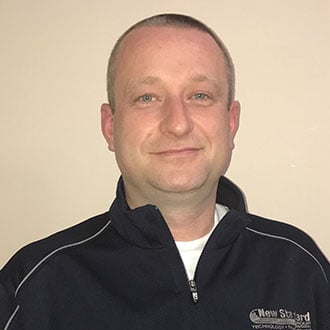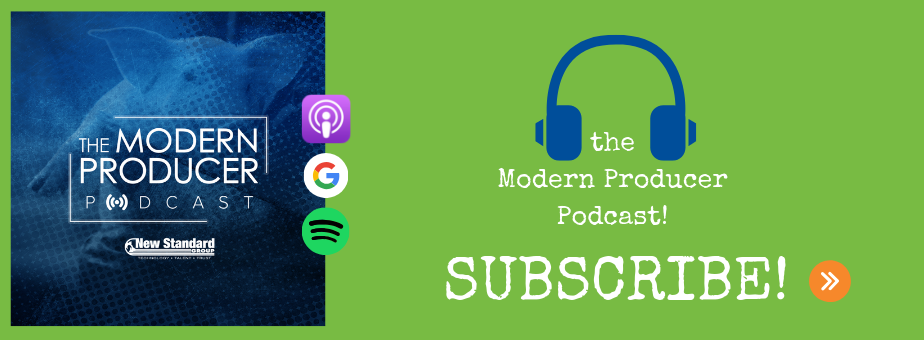 When I was asked to write an article reflecting on recent advancements in the pork production industry, I was first forced to evaluate where we were ten years ago. That was a reasonably straightforward exercise for me, as my son is currently ten years old—but where were we as an industry? Here are a few things that came to mind. They help explain the advancements in both the pork industry and our daily lives.
When I was asked to write an article reflecting on recent advancements in the pork production industry, I was first forced to evaluate where we were ten years ago. That was a reasonably straightforward exercise for me, as my son is currently ten years old—but where were we as an industry? Here are a few things that came to mind. They help explain the advancements in both the pork industry and our daily lives.
Technology
Ten years ago I did not have a smartphone. I realized they were available, and several people I knew had one, but they were not the norm. Smartphone GPS was also a novel development.
iPads did not exist (the first one released in 2010), and Google Chrome was fairly new (September 2008). Snapchat, Spotify, Airbnb, Instagram, Lyft, Pinterest, 4G LTE, Uber, and WhatsApp either did not exist or were recent developments.
Of course, all of those are technology-related, either hardware (phones and tablets) or the apps that we now take for granted. These advancements in technology parallel the changes in the pork industry. Such technological advancements have changed how we operate daily, including what we expect from a modern hog facility.
Consider this: in May of 2008 the first hogs were put into Eagle Creek Colony’s new sow barn. At the time this barn was the most technologically advanced in the world. And if you think that is an exaggeration then also consider that, in the first few years of operation, people from every continent (except Antarctica) toured through the barn.
Although the barn managers are friendly, I doubt their personalities alone drew all those visitors. So what did they come to see?
Nedap
Many came to see our large, dynamic sow pens using Nedap, something we still do today. The general layout required to have a properly functioning loose housing barn has not changed, but what we can do with it has. Remote access using smartphones or tablets, emailed notifications, and ease of use have all advanced with technology, including our expectations of how software should be used. But we also have new tools available to us that were not around ten years ago.
The Nedap Sow Weight Monitor is a hardware addition that we now incorporate into our new designs, which allows us to monitor each sow’s weight and send notifications if any sow is losing weight during her gestation.
This unique tool provides valuable information not previously available—which brings me to the other development which, although relatively new, has started to open up even more possibilities: the “Cloud.” Although most people use some form of the “Cloud,” few seem to understand what it is, so let me simplify. The Cloud is nothing more than remote storage; it has no magical powers and is not floating above you at all times. So what makes it unique? Using a Cloud means that the processing power of the devices we use no longer limit what we can do. Large amounts of data can now be produced and stored without slowing down the devices we use to interface with technology.
Big Data
Big data is somewhat of a buzzword currently, but to understand how it can apply to a barn, we first need to start thinking about a few things. What if you could know the exact habits of each of your sows? No detail is too small: when she gets up to eat, how long it takes her to eat, how fast she moves through a corridor, whether she uses the same feeder each day or chooses randomly, and beyond. If you knew every detail about an animal, do you think you would be able to improve your interaction with her? And could you use that knowledge to make better management decisions? The answer is obvious, but how many animals do you think you could keep track of?
That’s where big data and the Cloud come in. Without changing a thing about our barns, we can now start to record a sow’s every movement and collect that data for every animal in the barn. The immense amount of data generated can be stored in the Cloud, analyzed, and employed to improve our operations.
Practical Applications
Here are some of the things I expect we’ll be able to determine soon, just based on watching this data:
We will be able to determine and notify you if an animal is getting sick or has any other health issues before anyone in the barn can notice.
We will be able to see and alert barn staff if any feeder is not being used normally. Many things can cause feeder malfunction—mechanical issues, poor feed quality, etc.—but if we can send an alert to check a feed station, it will decrease the amount of time the equipment is not functioning and correctly and benchmarking against your numbers will be automatic.
Once enough data is collected, it will become possible to forecast and predict any production issues before they occur.
Simply put, once we start to collect and analyze all this data, the possibilities are endless. If you can think of a challenge you face in your barn today concerning production, I’m willing to bet that it can be solved with enough data. You know a lot about what goes on in your barn, but there is much you don’t know. Data helps you close the gap. And once we close that gap, some issues will solve themselves, and solutions we could never imagine will present themselves.
If you don’t believe me, think back ten years and you’ll realize how many of our daily routines have changed. I’ll bet you never thought you would be driving in a vehicle that stays in the correct lane on its own, backing that vehicle into a parking space with a camera rather than your mirrors, and all while listening to music sent from a satellite. Oh—and don’t forget the only reason you parked in that spot was to pick up an order you placed from your smartphone. Enjoy your technology. It’s everywhere, and it’s going to be in your barn as well.





